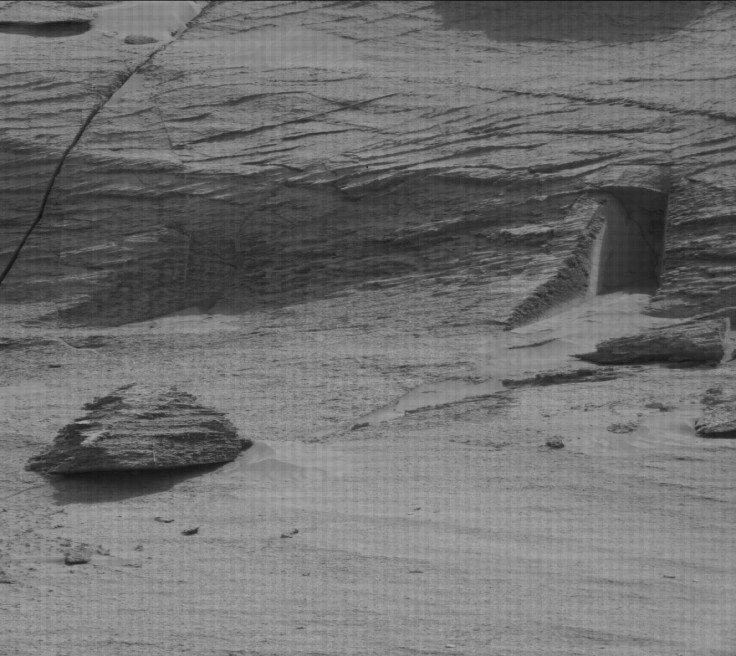Curiosity (the Martian rover) may or may not have killed the proverbial cat, or in this case, a Martian doorway to a not-so-inconspicuous underground tomb.
A recent Gizmodo report mentioned that NASA's Mars Curiosity rover took a photo of what looks like a seemingly rectangular and shadowy "doorway" to a not-so-hidden Martian underground tomb.
Curiosity's Mastcam took the photo of the doorway during its ascent of the Martian mountain, Mount Sharp.

Not-So-Hidden Martian Doorway Facts
Unfortunately for would-be conspiracy theorists, the picture almost definitely doesn't show an entrance into a Martian underground tomb.
Ashwin Vasavada, a project scientist in the Mars Science Laboratory, told Gizmodo that the "doorway" captured in Curiosity's photo is "just the space between two fractures in a rock." He jokingly added that it isn't the entrance to some dungeon level in a video game, like those found in Blizzard Entertainment's Diablo games.
According to Vasavada's statement, the area where Curiosity took the photo was formed from ancient sand dunes that were cemented together over time, which created the sandstone outcrops Crusiosity passed by at the time.
Additionally, the "doorway," or the fracture, is only about a foot tall, and it would have been buried and unburied over time by the shifting sands on Mars' surface once the ancient sand dunes were compacted together.
During this process, the sandstone was placed under varying amounts of pressure, causing it to buckle and fracture in different places, with the fractures in the area Curiosity once was generally being vertical in nature, Vaaavada added.
As such, Vasavada theorizes that the "doorway" captured in Curiosity's photo is likely formed in one of two ways. He claims that the "doorway" is "either two vertical fractures, where the middle piece has been removed, or one vertical fracture, and the blocks have moved apart a little bit."
However, British geologist Neil Hodgkins told Live Science in an email that the "doorway" is the result of billions of years of erosion. He explained that the rocky layers that can be seen dipping on the left and higher at the right of the rock are silt beds, "with harder sandy beds that stand out."
Hodgkins added that the silt beds were deposited sometime around four billion years ago under sedimentary conditions possibly caused by a river or a Martian wind-blown dune that eroded the strata since they've become exposed on the surface.
Furthermore, Hodgkins also claimed that a large boulder, which could be soon just to the right of the "doorway," could have fallen under its weight and dropped on the exposed strata, forming the "doorway" seen in Curiosity's picture.
"Gravity isn't as strong on Mars, but it is plenty strong enough to [create the 'doorway,'" Hodgkins said.
Curiosity's Current Location
Currently, NASA's Mars Curiosity rover is still ascending the Martian mountain of Mount Sharp. According to NASA"s Curiosity Rover live tracker, Curiosity is seemingly making its way to the opening of Mount Sharp's Gediz Vallis, or the Martian valley named after Turkey's Gediz River in Anatolia, at the time of this article's publication.
Universe Today reported in its article that the mountain was formed over the course of two billion years by liquid water that once flowed in the crater, creating a layered structure standing at around 5.5 kilometers (18,000 feet) tall.
Related Article : 10 Things to Know About the Curiosity Rover









